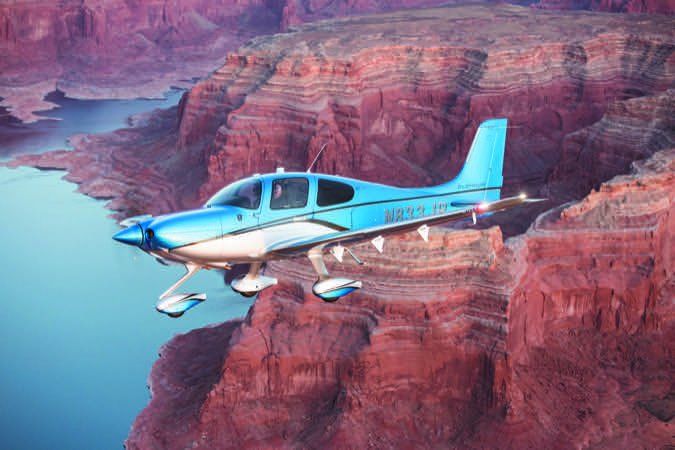Let’s get this out of the way, shall we? Cirrus salespeople aren’t apologetic that a fully loaded 2017 SR22T GTS comes with an eye-widening invoice north of $900,000 when you tack on an extended warranty. Cirrus offers less expensive models, of course, but the turbocharged SR22T is the most popular seller. Just how many buyers would spend nearly $1 million for an unpressurized piston single, you might ask? More than you might think.
Aircraft Flight Trial
While recent GAMA sales reports showed a flat market for new piston aircraft sales, Cirrus enjoyed continued sales growth—selling 317 total units in 2016—bringing the global fleet to more than 6500 SR series aircraft. It’s not backing down.
In addition to delivering several Vision Jets, Cirrus began 2017 by launching the G6, its sixth-gen SR model line and as we go to press, delivery slots for the latest and greatest SR22T are booked out to August.
For this report we took the keys to N828PT, a spanking new SR22T, for a couple of days, which included a round-robin cross-country trip from our home base in New England with a stop at the evolving Cirrus Vision Center customer delivery and support campus in Knoxville, Tennessee.
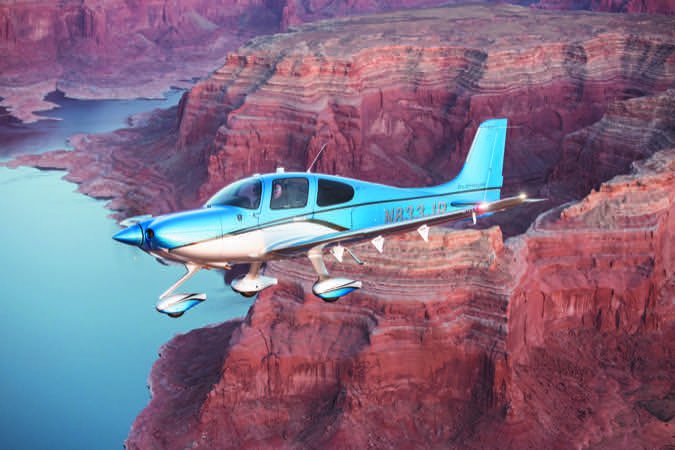
Perspective + Avionics
Whether it’s the entry-level SR20 (we’ll look at it in a separate article) or the flagship SR22T, a sizable upgrade to the model line is Garmin’s G1000 NXi next-generation integrated flight deck. Cirrus was the first OEM to adopt the new system, which it calls the Perspective+. We covered the G1000 NXi in the February 2017 issue of Aviation Consumer so we won’t go into the architecture here. The Cirrus version has nearly all of the same functions and improvements as the version made for King Air retrofits—and then some. This includes brighter displays (standard is two 10-inch displays, but just about every buyer springs for the larger 12-inch screens), a much faster processor, a redesigned system controller that finally has a QWERTY keyboard, plus there’s a stone-simple on-screen weight and balance/flight planning utility. Simply enter the weights for each seat/baggage area, and the system computes a weight and balance report, while taking into consideration fuel and de-icing fluid.
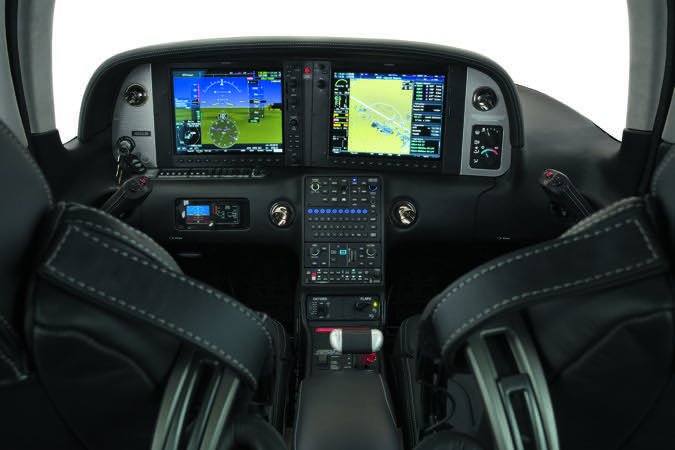

Cirrus advertises the useful load at 1248 pounds, and a cabin payload of 893 pounds with three hours of trip fuel with 45 minutes of reserve. The fully optioned aircraft we flew carried 74 pounds of de-icing fluid and topped-off oxygen (6 pounds of O2) for an available 679 pounds.
Like all G1000s of late, the Perspective+ has Garmin’s GFC700 autopilot with full envelope protection, including hypoxia protection. But what is new is the optional automatic yaw damper. There’s no yaw damper button on the new autopilot control panel—which is the same one that’s used in the Cirrus Vision Jet. Once the aircraft breaks 200 feet AGL in the initial climb, the yaw damper engages. Pass 200 feet when landing and the yaw damper automatically disengages.
The SR22 G6 now has all-glass flight instruments; the steam-gauge backups that used to live in the lower subpanel have been replaced with the Mid-Continent SAM electronic EFIS. It’s linked to the primary PFD so whenever you change the primary baro setting, it automatically changes the setting in the SAM backup. That’s a big convenience.
There’s an angle-of-attack system made by Safe Flight Instrument Corporation and AoA data is displayed on the Perspective+ PFD.
Automotive Inspired
The G6 is really the culmination of everything Cirrus has done to the airplane since its introduction in 2001. Later versions always had generous creature comforts, but we think the five-place leather interior of the G6 is the best yet.
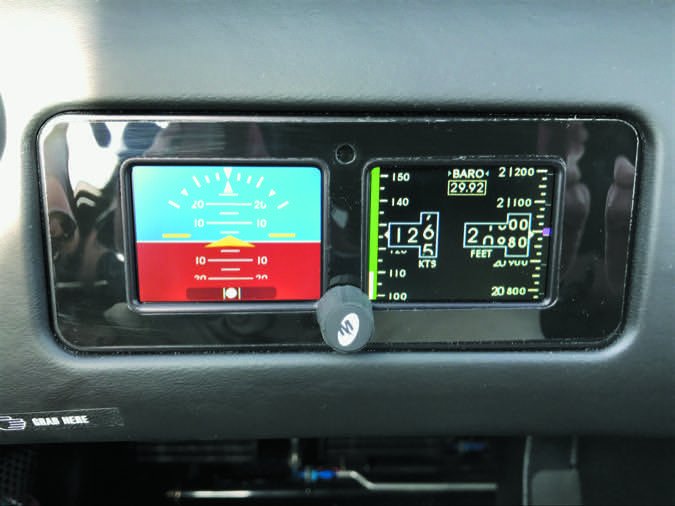

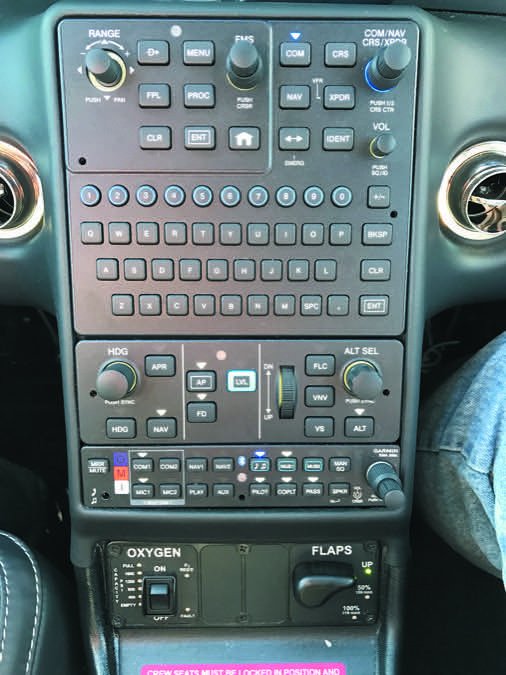

For 2017, it’s a bunch of thought-out small improvements that when added up just make the cabin, which has 60/40 split rear seating, a more comfortable and accommodating place to be.
For instance, you don’t hang the headsets from the overhead anymore. Instead, leather snap-straps on the side of each seatback keep them out of the way when you egress and ingress the cabin. Need a place to park your smartphone? There are strategically placed pockets on the edge of the front seats (between your knees) made for it. With way too much camera gear aboard, we were ecstatic to find no fewer than four USB charging ports in the center armrest—more than some hotels.
You’ll want to keep your devices charged because the G6 is big on wireless connectivity. The Garmin audio panel has Bluetooth, so you can handle phone calls through the standard Bose A20 headsets and also stream your tunes in. Optional is Garmin’s Flight Stream 510, where you sync flight plans and load databases into the Perspective+, and have roaming control over the SiriusXM radio in the Garmin Pilot app. There’s also the optional Cirrus Global Connect system, which uses Garmin’s GSR56 Iridum satcomm system for sending and receiving SMS text messages directly from the Garmin Pilot app.
You don’t need to spend much time with the G6 before you recognize that its styling and ergonomics are high-end sports sedan-like. New for 2017 is a key fob for locking and unlocking the doors. The airplane even has automotive-style environmental controls—with three-speed fan, recirculating and defroster modes—and good air conditioning and heater performance.
But as comfortable as the cabin is, it’s still unpressurized. For some—especially traveling families—that could be a deal breaker for an airplane in this price category. With its twin turbochargers, the airplane is really at its best in the low flight levels. Maximum operating altitude is 25,000 feet. No, BasicMed pilots can’t fly it there. The SR22T has a built-in oxygen system with a command switch and quantity annunciator that’s nicely located forward of the throttle quadrant.
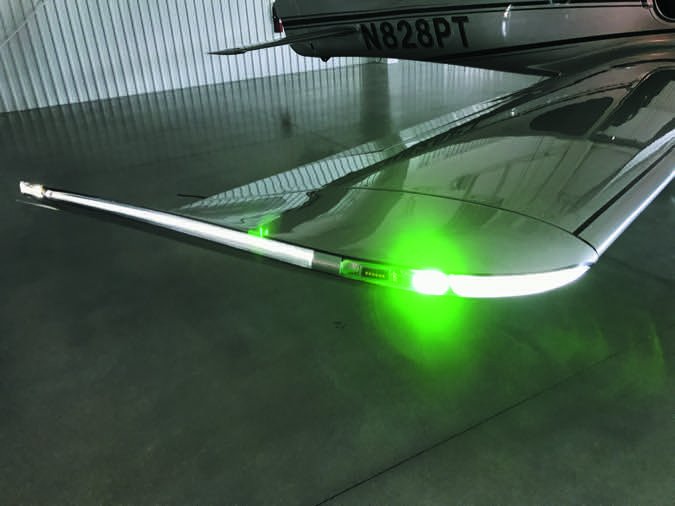

An easy way to tell a G6 from other generation Cirri on the ramp is by the lighting. New on the G6 is the Spectra automotive-inspired wingtip LED lighting system designed exclusively for Cirrus by Whelan Engineering. The entire wingtip houses a variety of LEDs for landing lights, nav lights, position lights and an aesthetic Halo light that automatically comes on when you unlock the doors with the key fob. Additional convenience lighting is scattered around the aircraft, including LEDs that illuminate the cabin steps and under-wing ground lighting, which illuminates a good chunk of ramp space around the airplane. The cabin dome light, footwell lights and baggage area lights come on when you unlock the doors.
In the air, the wing-mounted landing lights automatically switch to wig-wag mode when you climb through 300 feet AGL. In the descent back through 300 feet, they turn solid. We made a night landing and can attest they are extremely effective. Couple them with the SVT synthetic vision and optional Max Vis infrared night vision camera and you’ll never sweat another night landing again.
Known Icing
The airplane is certified for flight into known icing, equipped with a TKS system with wing tanks that hold four gallons each of TKS fluid. The system uses two pumps for protecting the leading edges of the wings and the vertical and horizontal stabilizer. In the Normal mode, the pump cycles on and off in 30-second intervals, which leaves a 2.5-hour endurance. In the High setting, one of the pumps runs constantly, which cuts the endurance in half. At the maximum setting, both pumps run full blast for two minutes. At that point, endurance is shaved to 30 minutes. Clearly, if you’re running those pumps on maximum, you’re doing everything you can to get on the ground.
The High setting can be strategically used for de-icing. For instance, you’re cruising along and run into frozen clouds and immediately build ice. Run the system on high to knock the ice off, then switch back to normal to help keep the ice off. There’s also fluid nozzles at the bottom of the windshield.
Flying It
Prepping to fly a new Cirrus starts with the new interactive flight operations manual, or iFOM. Cirrus thinks of the POH as a legal aircraft document, but the iFOM is how it trains pilots to fly the aircraft. The iFOM is a multi-touch iBook covering techniques, standards and detailed operating procedures. We found it to be engaging and useful.
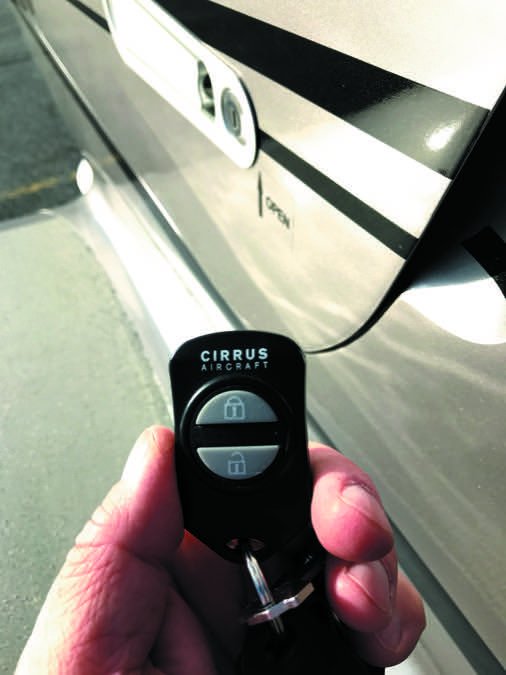

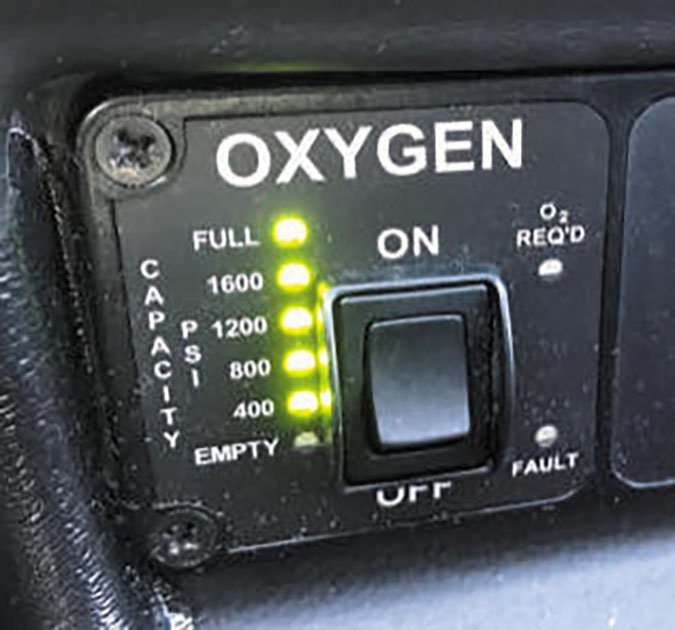

As you would guess, a huge part of transitioning to the G6 is learning the Perspective+ avionics and you’ll want to know it well. Eyes are on the MFD from the second you switch the two batteries on.
The SR22T is powered by a 315-HP Continental TSIO-550-K twin turbocharged six-cylinder engine. On the takeoff roll, where the big Continental spools to 36 inches of manifold pressure and 2500 RPM (with its fixed governor, there’s no prop control), the drill is to apply full power and a healthy amount of right rudder. Once rolling (with 50 percent flaps deployed), pull a slight amount of back pressure to get the weight off the castering nosewheel and the airplane flies itself off. And that 80-knot rotation speed comes quickly. The ground run on a standard day at gross weight is 1517 feet.
Accelerate to 90 knots, retract the flaps and pitch for Vy, which is 103 knots. We saw initial climb rates of 2000 FPM, which makes for a fairly steep deck angle for VFR climbs, especially with the large glareshield. When passing 600 feet, which is the magic altitude should you need to deploy the CAPS whole-airplane parachute, establish a cruise climb by pitching for 125 to 130 knots and you’ll keep the CHTs below 400 degrees. Cruise climb is at full power and at lean of peak by simply keeping the throttle fully forward and pulling the mixture back to the blue LOP line on the fuel flow gauge.
The first leg of the long-distance trip was southwest bound into a demoralizing headwind. At 6000 feet set for a lean-of-peak cruise (30 inches MP) the fuel flow was 17.2 GPH and yielded 176 knots true airspeed. In this airplane, it’s typical to flight plan for 180 knots at 10,000 feet. But you don’t buy a turbcharged SR22T to fly low. Above FL180, you’ll flight plan for 200 knots true.
On the northeast-bound return trip at FL210, we saw 203 knots true. From sea level to FL200, pretty much plan on a 40-minute climb at the mentioned climb power settings. With a 40-knot push on the tail and minimal level-offs in initial climb, that made for a nonstop flight from Knoxville, Tennessee, to Hartford, Connecticut, in just shy of three hours.
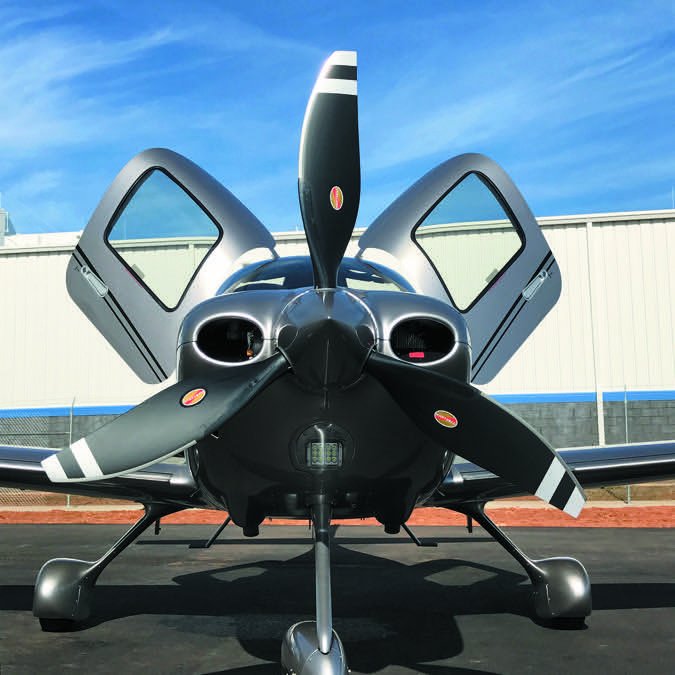

The SR22T’s fuel capacity is 93 gallons and fuel management is a no-brainer thanks to the range/endurance utility on the MFD. The navigation page tells you everything you need to know about your current fuel status, including the exact amount of fuel that’s on board and the calculated FOD, which is the fuel remaining over destination. Zoom out on the map and fuel range rings show the endurance. For instance, you can set the utility so it draws a dotted green range ring, which tells you where on the map there will be one hour of fuel remaining. A solid ring tells you where you’ll run out of gas. Enrichen the mixture and you’ll see those range rings shrink as the fuel flow goes up.
Anyone who runs out of fuel in this airplane deserves the Darwin award. In addition to the map and digital fuel gauges, the PFD has six different annunciators warning you of the pending trophy. An on-screen scheduler tells you when to switch tanks.
With pitch and roll trim compression springs, control pressures are moderate and you’ll quickly realize that the electric trim system is your ally. While the springs give the aircraft impressive stability in turbulence and create a tendancy to return it to level flight (when the GFC700 autopilot isn’t flying, of course), if you fight them by not trimming during landing you’ll surely lose.
And once you figure out the correct sight picture over the large glareshield—and nail the correct speeds—you’ll be rewarded with confidence-building landings. It helps that you can lower the first notch of flaps at 150 knots and start slowing down early. What worked for us was crossing the numbers at 80 knots with full flaps. Keep the nose down and resist flaring too early, otherwise it gets ugly.
Choose Your Whip
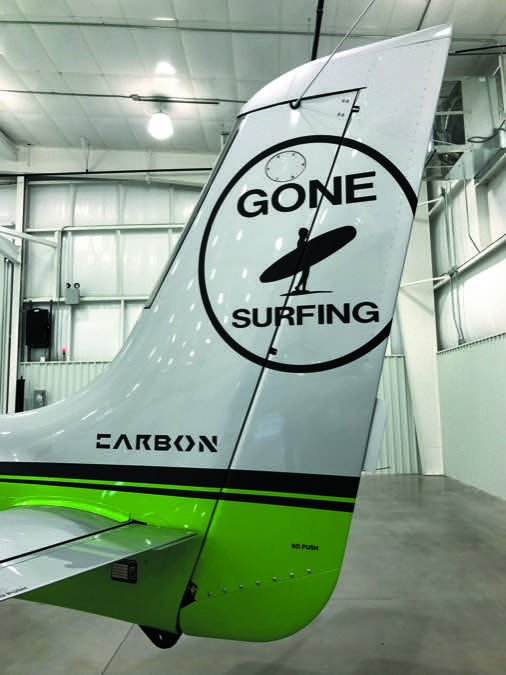

Cirrus offers a healthy number of option packages throughout the SR product line—far too many to list here. The partial list includes avionics add-ons (active traffic and TAWS, for example), the Carbon, Platinum and Rhodium appearance packages and other upgrades that alter price and weight. See the sidebar on page 8 for customization processes above and beyond standard packages.
The aircraft flown for this report was the flagship GTS equipped with nearly every equipment option available. It was being sold with a five-year extended warranty at $933,000.
The SR22T base price is $631,900, which includes a two-year spinner to tail warranty.
A lot of dough? You bet it is. Still, Cirrus says roughly 40 percent of its buyers move up from older Cirrus models. After living with the new G6 for a couple of days, we think it could be the best one they’ve purchased, based on its creature comforts and improved systems.
Vision Center: “All Things To Cirrus Owners”
While Cirrus Aircraft’s manufacturing operations will remain at its headquarters in Duluth, Minnesota, and also in Grand Forks, North Dakota (where composite components are produced), customer deliveries and training are now staged from its expanding Vision Center campus at the McGhee Tyson airport in Knoxville, Tennessee. As an expansion of its business—and partly to support deliveries of the now-certified Vision Jet—the Vision Center is where factory repair support, aircraft customization and customer training takes place. At press time, Cirrus has already staged close to 70 aircraft deliveries from the Knoxville location.




0)]
The campus is made up of three major components to include the Cirrus Experience Center (which temporarily accommodates customer training, among other things), the factory service center and the delivery center. Cirrus is preparing to break ground on a 20,000-square-foot training facility to house a full-motion Level D simulator for the Vision Jet, plus several fixed training devices for the piston aircraft line. The new facility will also house the company’s flight ops department. The showpiece of the campus will be the actual Vision Center, which will house retail space, customer lounges, FBO services and custom design services for the entire product line of aircraft.
During my recent visit, I spent some time with Stephen Deucker, the Vision Center’s vice president and general manager. The enthusiastic Deucker seems the right guy to ensure that buyers who plop all that money on the table for a new Cirrus have a high-end experience along the way. Before coming to Cirrus, he spent much of his career as an executive in the luxury hotel industry.
Cirrus rolls out the red carpet—literally—for buyers picking up their new aircraft. Before the training, familiarization or acceptance flight is accomplished, you’ll walk into the hangar along a red carpet leading to the airplane. One owner told me the experience exceeded her expectations tenfold. “My SR22 is the third new aircraft (and third brand) I’ve purchased and the experience blew the others away,” she told me.
“As we grow this campus, we’re going to be all things to a Cirrus owner; a place for Cirrus pilots to stop just to check out what we’re doing,” Deucker told me.




1)]
The company picked the Knoxville location for several reasons, most of which are obvious when you visit. The weather is far more favorable than Duluth and the location is more centrally located for the fleet of U.S.-based Cirrus owners and pilots. Plus, the campus is within walking distance of commercial airline service. There’s also a Hilton hotel that’s less than a minute’s shuttle ride away. Better yet, McGhee Tyson (KTYS) is one of those underutilized airports located in Class D airspace. I flew in and out of Tyson a few times during my visit and never waited in line to take off or land.
Planning on customizing your new Cirrus via the Xi personalization program? The Vision Center is the place to do it. Here you’ll consult with design experts who help plan custom paint and decal work, custom interior pieces, door sills, seat stitching and carpeting. Xi personalization isn’t chump change. It adds nearly $60,000 to the price of an SR, and isn’t yet available for the Vision Jet.
Not sure what you want? It really is a personalized process. Instead of looking at previous Xi projects, you’ll first be contacted by someone from the Cirrus design team to better understand your goals while using the airplane. Got special interests and hobbies? Put them on the table.
“It’s more about building and designing an aircraft that is a personal reflection of the owner, rather than choosing materials from a catalog and putting them together,” said Cirrus senior line manager Ivy McGiver. Once a design is finalized, it is slotted into the production schedule. It doesn’t usually take any longer to actually build the Xi aircraft, but Cirrus allows some extra time for extra attention to detail while the aircraft is on the line.
The Vision Center is also a place to maintain a Cirrus. The factory service center is owned and operated exclusively by Cirrus and is staffed by many techs who worked at the service center in Duluth. Next to the delivery hangar is the service hangar. Cirrus offers just about every service an owner might need. This includes oil changes, 50-hour and annual inspections and engine swaps. The service center is also equipped with a paint finishing booth for taking care of blemishes and other rash that’s inevitable once the aircraft hits the field.
The way Deucker put it, “In some ways, the Vision service center in Tennessee is like taking your Mercedes to Munich to get its oil changed.”

